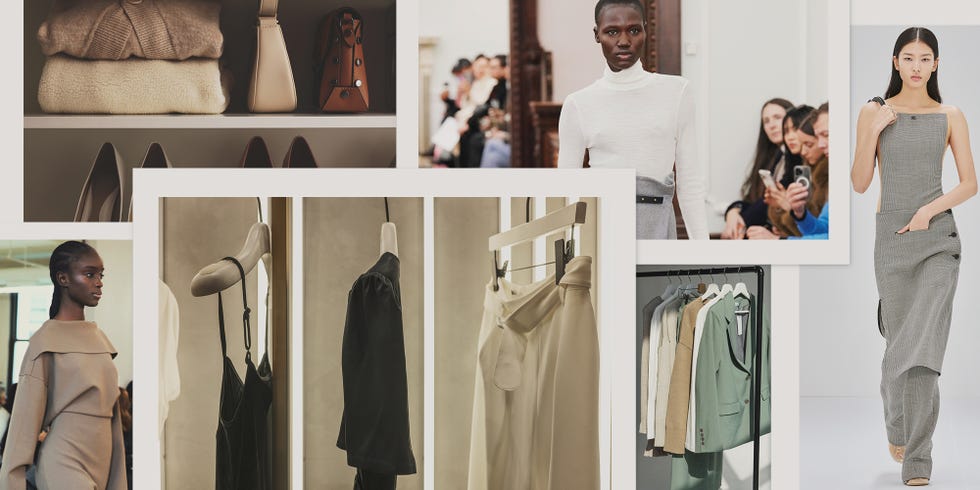Style Points is a weekly column about how fashion intersects with the wider world.
The idea of reducing our consumption—but making it “aesthetic”—is nothing new, from the contemporary minimalist movement to the “de-influencing” trend to the heyday of the Marie Kondo method. Arguably, it even stretches back further, to the WWII-era mandate of “make do and mend.”
Now, a shiny new variation has emerged. On TikTok and Instagram, where people are more likely to brag about collecting designer labels and unboxing massive hauls, influencers are boasting about wearing the same ripped jeans from seasons past or using one hair straightener for a decade-plus. And since everything on TikTok quickly gets “-core” appended to it, like it or not, “underconsumption core” was quickly christened the next Big Thing. But is this a fleeting trend with the mayfly lifespan of last winter’s mob wives? A growing lifestyle movement? Working-class stolen valor? It depends on who you ask.
Aja Barber, author of Consumed and a contributing editor at ELLE UK, is an avid re-user of her wardrobe. She recently began repairing a Moroccan basket she bought from a flea market as a teenager that she estimates is over 35 years old. She rewears her high school gymnastics leotards to her ballet classes today. On her Patreon, she asks her subscribers questions like, “What’s something old that you started reusing and that you will enjoy?”
But while Barber’s lifestyle could be held up as an example of underconsumption core, she balks at the term. “I get a little bit worried when people are [calling it] core or trend. No, no, no, no, no. This is called living a normal life,” she says. “It is called regular things that we should all be doing. The way we lived for a very long time and the way your parents lived. But if calling it a trend is what gets people to care about it, then I’m here for that as well.”
She notes that the current online obsession with underconsumption has its roots in de-influencing, which, she says, “started out with: ‘You don’t need this.’ Then people who were looking to cash in on the trend were like, ‘Don’t buy this, buy this instead!’ I do worry about how the messaging becomes manipulated in order to benefit the consumerist cycle that we seem to be trapped in.” With the social media cycle and its emphasis on “next, next, next,” she fears any progress may be short-lived. “How do we keep it going? How do we stop it from being a trend and start thinking about how it should be normalized?”
Andrea Cheong, author of Why Don’t I Have Anything to Wear and host of the podcast Fashion Our Future, has always made “sustainable buys, not sustainable brands” her emphasis, because, as she says, “you can’t actually buy sustainability.” She believes that our relationship to consumption when it comes to clothing is somewhat broken. “I don’t think anyone was really taught how to shop [for clothes] in the way we’re taught how to buy food, reading nutrition labels.”
Like Barber, Cheong reminds me that what might seem like a brand-new trend on your For You Page is a longstanding practice in many communities. For example, she notes that in some Asian cultures, worn clothes would be turned into pajamas or “home clothes.” The only difference is that now, we have a wider window into varying approaches to consumption. Social media “has invited anyone who can download an app and upload a video to create content. And so before when you had this elitist hierarchy of influencers or celebrities, you now have a more democratized algorithm,” she says. Also driving the movement is the backlash to excessive hauls and the “swipe up for more!” culture of overconsumption on our feeds.
“People who have always done this will continue to, and maybe people who were unsure or felt embarrassed to do it will not feel as ashamed. [But] I don’t necessarily think it’s going to cause this big seismic shift in perspective,” Cheong says. What she does find interesting is that “people are not doing this stuff because, first and foremost, they’re like, ‘I’m so sustainable.’ They’re doing this because it saves them money.” Ultimately, she believes, “It doesn’t really matter how we get there. As long as people are having these more mindful, conscious practices, it’s the same goal: slow down, buy less, use your stuff more often.
“Calling it a trend doesn’t mean that it just popped up. It means it’s actually super anchored in something. When someone hears the word trend, we think of it as something fleeting,” she adds. “This is not going anywhere. This is going to rear its head in slightly different ways, but you are going to see the fingerprints of it everywhere.”

Véronique Hyland is ELLE’s Fashion Features Director and the author of the book Dress Code, which was selected as one of The New Yorker’s Best Books of the Year. Her writing has previously appeared in The New York Times Magazine, The New Yorker, W, New York magazine, Harper’s Bazaar, and Condé Nast Traveler.




